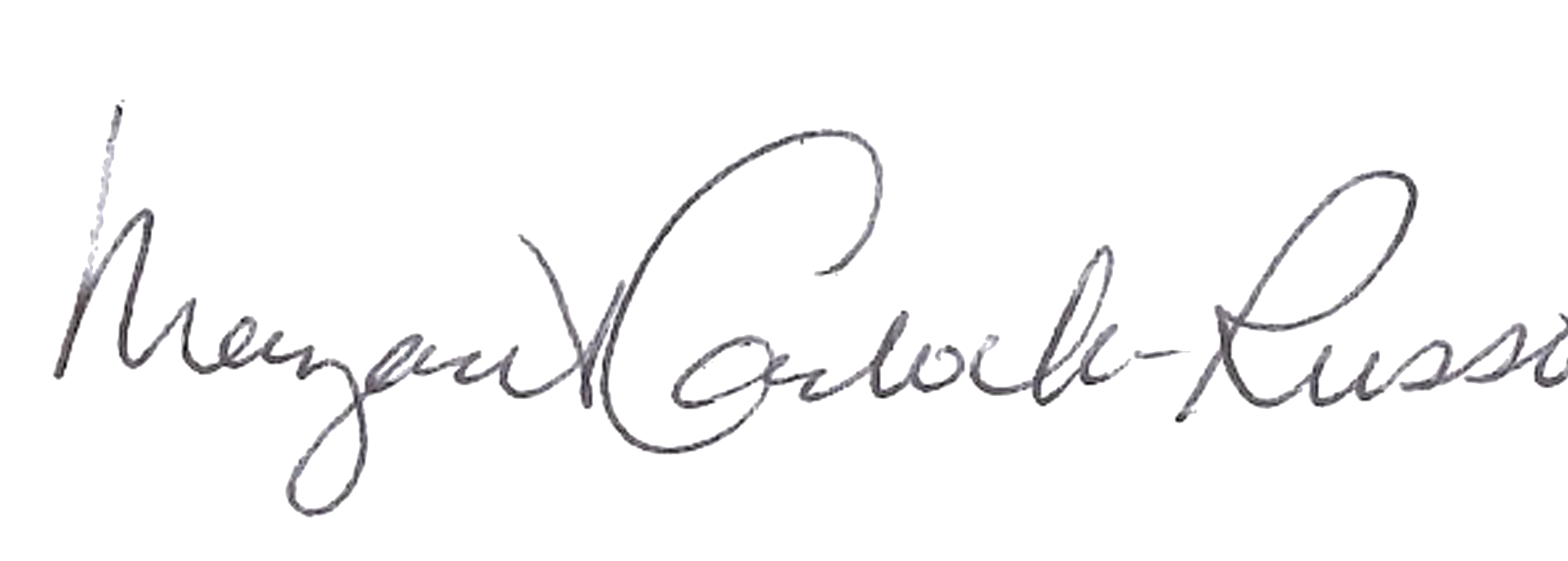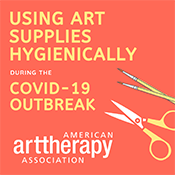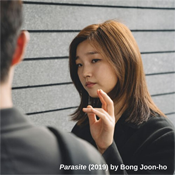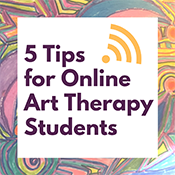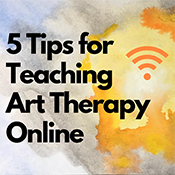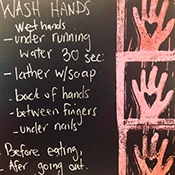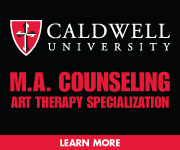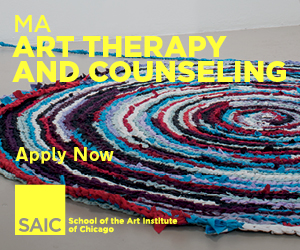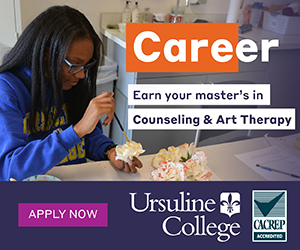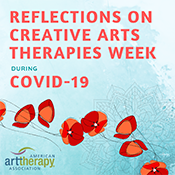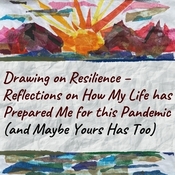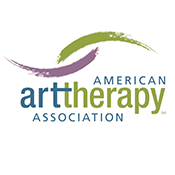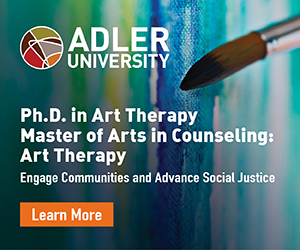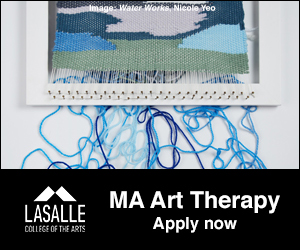 |
||||||||||||||||||||||||||||||||||||||
| Archive | Subscribe | Advertise | arttherapy.org | ||||||||||||||||||||||||||||||||||||||
|
This year, I am proud of the work AATA has been able to do to support our members, from offering virtual learning and networking, building awareness by educating the public about our profession, and advocating for wider recognition. If you have not read it yet, I encourage you to check out our 2020 Impact Report. Thanks to our members’ amazing artwork and thoughtful commentary, this report truly tells the story of our year as an organization and a profession. We were able to offer more scholarships to art therapy students and new professionals in 2020 than ever before, thanks to so many sponsors and individual donors. I hope you’ll consider donating to our scholarship funds to support the next generation of art therapists. One important lesson I learned in 2020 is that people need to feel supported by their communities. Our members have bolstered each other, whether connecting on the MyAATA Forum or during our virtual events, and shared their own experiences and voice with us through surveys and blog articles. Looking ahead to 2021, I am most excited about the prospect of vaccines bringing the end to this pandemic! I am also excited about continuing to collaborate as a community to not only help address our nation’s ongoing mental health crisis, but also issues of racial injustice and diversity, equity and inclusion (DEI) in our society and also within our AATA and the art therapy field. I hope you will continue to engage with AATA—whether you’re a long-time member, or new to the association. On behalf of the AATA Board of Directors, I am so honored that you’re a part of our art therapy community. Best wishes to you and your loved ones in the New Year!
Margaret Carlock-Russo, EdD, LCAT, ATR-BC, ATCS AATA President
Andrea Davis, ATR-BC, LPC-AT-S As we navigate the current coronavirus pandemic, it is a good time to be mindful about art supplies and ways to prevent the spread of illness. The Centers for Disease Control and Prevention (CDC) describes COVID-19 as an airborne illness. Droplets in the air can be breathed in and also land on surfaces including work spaces and art supplies. Protecting clients from harm includes having clean art supplies.
Clara Keane, Manager, Advocacy & Public Affairs Parasite made history during the 2020 Oscars, winning four awards and becoming the first non-English-language film to win best picture, the Academy’s highest honor. This acclaimed playful yet dark satire thriller highlights the opposite spectrums of social class in urban South Korea, taking a microscope to two families whose paths become intertwined when Kim Ki-woo begins tutoring English to the daughter of the wealthy Park family. Parasite’s success puts art therapy in an international light and offers an opportunity to delve into what exactly art therapy is.
Patrica (Trica) Zeyher, Master’s in Clinical Mental Health Counseling and Art Therapy Candidate When I found out that my internship site, Mental Health Partners in Boulder, Colorado, was going to be transitioning to telehealth therapy from face-to-face services due to coronavirus social distancing, I felt prepared from my online graduate experiences. Edinboro University’s online art therapy program provided me with practice to succeed even in these challenging times. Here are my Top 5 tips on how to succeed in an online art therapy master’s program.
Carolyn Brown Treadon, PhD, ATR-BC, ATCS To say the last week has been challenging is an understatement! As we all quickly learn to navigate challenges in our daily lives in response to COVID-19, many are also working to get courses and clients transitioned to an online platform. With the help of my colleagues at Edinboro University, where we offer an art therapy master’s program that can be completed 100 percent online, I put this resource together to offer some advice to colleagues in other programs navigating this transition. We hope that these tips will be helpful to you.
Gretchen Miller, MA, ATR-BC, ACTP Every year we celebrate Creative Arts Therapies Week with the National Coalition of Creative Arts Therapies (NCCATA). Along with our colleagues not only in art therapy but also in music therapy, dance/movement therapy, drama therapy, poetry therapy, and psychodrama, we take time to bring awareness to the power of our professions and to our roles in the mental health field. This year’s Creative Arts Therapies Week (#CATWeek2020), which started on March 15 and continues through March 21, is significantly different than prior years.
Celeste Schexnaydre BFA, MA, ATR-BC As I look back, I recognize that much of my life has been a dress rehearsal for this episode of quarantine, social distancing and a sudden alteration to my art therapy practice. I imagine that most of you can relate in some way. For some of you, maybe even your path to becoming an art therapist prepared you. As art therapists, we recognize the path is one of a pioneer and trailblazer, a different drummer perhaps. But one thing is for sure: it is a path that presents misconception and requires persistence and resilience.
Lindsey Vance, ATR-BC, LPC Growing up in a community that did not speak of mental health care or seeing a therapist, this idea of a career path was foreign to me. Explaining to my family that I was going to be an Art Therapist was even more so confusing, however I went on to be one. The privilege to work in various clinical and community-based settings afforded me the opportunity to recognize that I was not alone in my childhood stigma of misunderstanding and distrust for psychotherapy, but rather various clients of color shared this same belief (Clack, 2018). Here are three lessons I’ve learned about changing the framework of therapy in my practice with clients of color.
Jordan S. Potash, PhD, ATR-BC, LCAT , LCPAT, Editor in Chief As art therapists and their clients adjust to tele-art therapy and online education, Art Therapy: Journal of the American Art Therapy Association contains several articles to help navigate these challenges. The following are a selection of recent resources on key topics. The full journal offerings, going back to Volume 1, are included with AATA membership.
Jordan S. Potash, Debra Kalmanowitz, Ivy Fung, Susan A. Anand, and Gretchen M. Miller To help art therapists work effectively with the realities of the novel coronavirus disease (COVID-19), this special report brings together art therapists who have experience working in pandemics (Ebola, SARS), attending to health professionals, and building creative virtual communities.
Helén Wahlbeck, Linda J. Kvist, and Kajsa Landgren Fear of childbirth (FOC) can lead to maternal distress during and after pregnancy. The aim of this randomized controlled trial (RCT) was to examine whether art therapy as an adjunct to midwife-led counseling (study group) could reduce FOC significantly more than midwife-led counseling alone (control group).
C. Estelle Campenni and Ashley Hartman This randomized controlled study examined effects of mandala (structured and unstructured) and instruction (directed expression and free expression) on state anxiety, mood, and state mindfulness.
Rebecca Arnold This pilot study explored how creative engagement could serve as a way to navigate the personal loss experiences of professional art therapists.
Jordan S. Potash, PhD, ATR-BC, REAT, LCAT (NY), LCPAT (MD) As a white art therapist who has worked cross-racially for almost my entire career, I am regularly reminded that there are always racial-social-political influences that enter into the art therapy relationship. My current work in an open art therapy studio at a drop-in center for runaway and homeless adolescents and young adults, most of whom are Black, reinforces three strategies for art therapists for understanding and responding to power differentials.
|
||||||||||||||||||||||||||||||||||||||
|
The AATA's Art Therapy Today includes a digest of the most important news selected for the AATA from thousands of sources. Guest articles may be submitted to info@arttherapy.org. Publication of any guest article is at the sole discretion of the AATA. The opinions expressed and/or contents of guest articles, advertisements, and external links included in any AATA publication do not represent the positions or policies of the AATA. The AATA makes no warrenty or representation concerning the accuracy of such content. |
||||||||||||||||||||||||||||||||||||||
 At AATA, we are ending this year full of gratitude for our art therapy community and full of hope for what’s to come in 2021. This year presented unimaginable challenges, and art therapists showed up on the frontlines—finding ways to keep our clients safe in-person or engaged via teletherapy, meeting clients where they are and helping them cope.
At AATA, we are ending this year full of gratitude for our art therapy community and full of hope for what’s to come in 2021. This year presented unimaginable challenges, and art therapists showed up on the frontlines—finding ways to keep our clients safe in-person or engaged via teletherapy, meeting clients where they are and helping them cope.